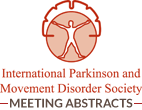
“At the beginning of the 21st century, the therapeutic management of neurodegenerative disorders remains a major biomedical challenge, particularly given the worldwide aging of the population over the past 50 years that is expected to continue in the forthcoming years.
This review will focus on the promise of cannabinoid based therapies to address this challenge.
Such promise is based on the broad neuroprotective profile of cannabinoids, which may cooperate to combat excitotoxicity, oxidative stress, glia-driven inflammation and protein aggregation.
Such effects may be produced by the activity of cannabinoids through their canonical targets (e.g. cannabinoid receptors, endocannabinoid enzymes) but also, via non-canonical elements and activities in distinct cell types critical for cell survival or neuronal replacement (e.g. neurons, glia, neural precursor cells).
Ultimately, the therapeutic events driven by endocannabinoid signalling reflect the activity of an endogenous system that regulates the preservation, rescue, repair and replacement of neurons and glia.”
https://www.ncbi.nlm.nih.gov/pubmed/29856067
https://bpspubs.onlinelibrary.wiley.com/doi/abs/10.1111/bph.14382









